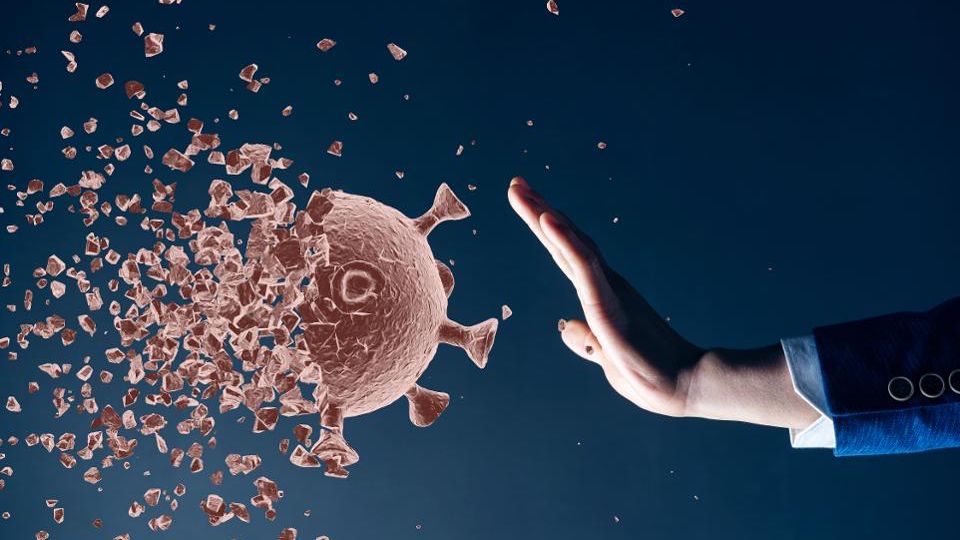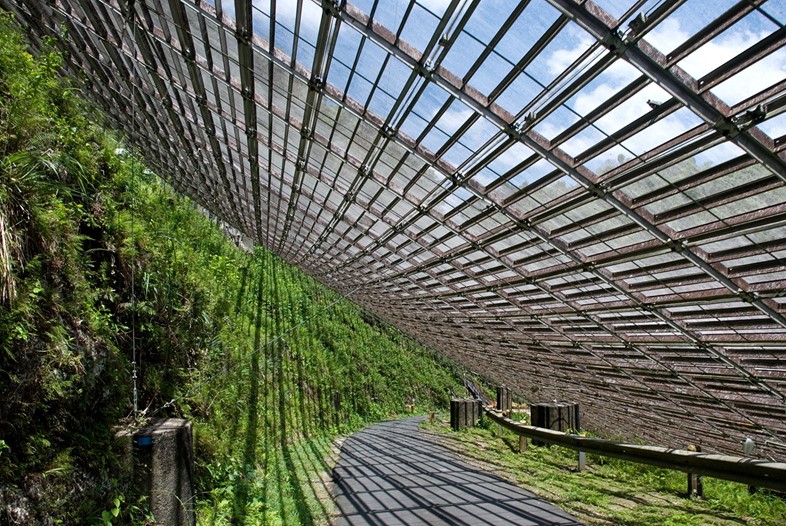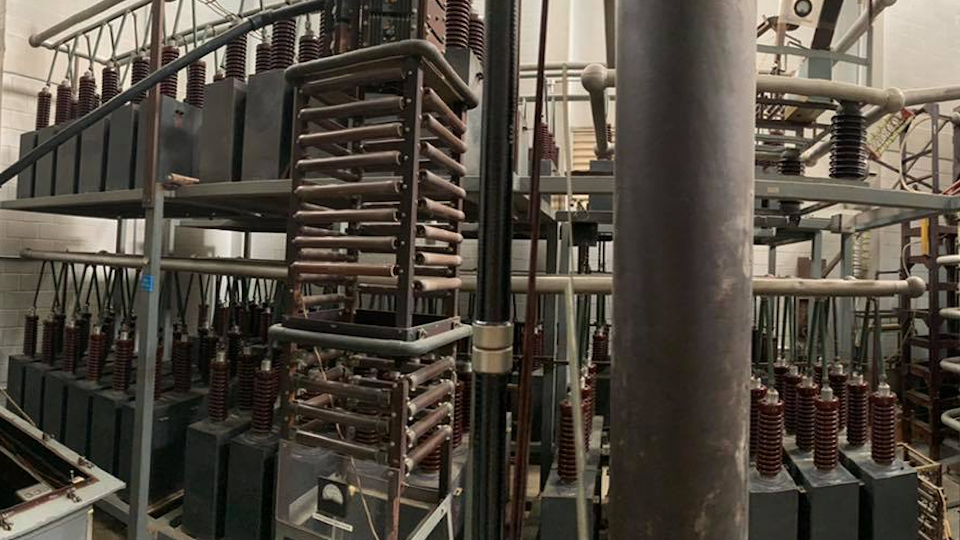|
|
|

Arecibo Observatory
Management Update
Regarding COVID-19
Pandemic
|
|
The Arecibo
Observatory is
slowly returning to
normal operations.
Telescope
observations have
continued, even
through the
challenges presented
by the global
pandemic. We are now
ramping up the
required maintenance
that had been slowed
due to limited
access to the
observatory.
Most of the staff
are working remotely
when possible. For
staff who need to be
on-site, we are
taking extraordinary
safety measures.
These include
measuring
temperatures at the
entrance, enforcing
the use of face
masks, and
minimizing group
activities whenever
possible.
Currently our staff
are healthy and
safe, which is our
top priority.
|
|
Primary Reflector
Callibration
|
|
 We have begun
inspections of the
panel structure of
the AO primary
reflector in order
to reverse the
warping of the dish
caused by Hurricane
Maria. As early as
this summer we
anticipate
initiating the
adjustments to the
dish, which will
significantly
improve the
sensitivity of the
telescope. We have
purchased the
laser-ranging
equipment that will
facilitate our
future maintenance
of the primary
reflector’s nominal
shape, allowing
in-house calibration
of the dish, and
counteracting any
future distortions
to solidify the
Arecibo
Observatory’s
continued reputation
as one of the most
sensitive radio
telescopes in the
world.
We have begun
inspections of the
panel structure of
the AO primary
reflector in order
to reverse the
warping of the dish
caused by Hurricane
Maria. As early as
this summer we
anticipate
initiating the
adjustments to the
dish, which will
significantly
improve the
sensitivity of the
telescope. We have
purchased the
laser-ranging
equipment that will
facilitate our
future maintenance
of the primary
reflector’s nominal
shape, allowing
in-house calibration
of the dish, and
counteracting any
future distortions
to solidify the
Arecibo
Observatory’s
continued reputation
as one of the most
sensitive radio
telescopes in the
world.
|
Status Update on the 430
MHz Transmitter
|
 Arecibo’s 430 MHz
transmitter system was
shut down in late 2019
following a series of
long-standing issues
that were exacerbated by
water damage to the
system during Hurricane
Maria in 2017 and
culminated in the loss
of two klystrons due to
transmitter malfunctions
in 2019. The Arecibo
management is actively
working to finalize the
contract to restore the
Incoherent Scattering
Radar capabilities at
the observatory.
Arecibo’s 430 MHz
transmitter system was
shut down in late 2019
following a series of
long-standing issues
that were exacerbated by
water damage to the
system during Hurricane
Maria in 2017 and
culminated in the loss
of two klystrons due to
transmitter malfunctions
in 2019. The Arecibo
management is actively
working to finalize the
contract to restore the
Incoherent Scattering
Radar capabilities at
the observatory.
|
|
AO S-band Update
|
The observatory has
acquired and installed
both Klystrons to power
our radar system.
However, we are
currently operating one
klystron at a time while
we await additional
generators to be able to
power them both
simultaneously. We
ordered the new
generators last year;
however, we expect some
continued delay since
the purchased generators
were supposed to be
manufactured in Wuhan,
China.
|
|
|
|
|
|
|
|
|
|
|
|
|
|
|
|
Our New Staff Members
|
We are excited to welcome Abniel Machín, Macime
Devogele, Juan Oliver and Sevaraj Dharmalingam to the AO
team!
|
|
|
|
|
|
|
Dr. Abniel Machín
|
|
As executive director of the Science and
Visitor Center, Dr. Machín is in charge
of the operation of the Center as well
the education and public outreach (EPO)
components of the Arecibo Observatory.
His mission is to promote the sciences
that are studied and practiced at the
Arecibo Observatory while creating
educational programs and collaborations
that increase the number of students
choosing STEM careers.
|
|
|
|
|
|
|
|
|
|
|
|
|
|
Dr. Maxime Devogele
|
|
Maxime Devogele joins the Planetary
Science group at AO. His research will
focus on combining radar and optical
observations of near-Earth objects to
better understand their surface
properties. Maxime joins us from the
Lowell Observatory, where he worked as a
postdoctoral researcher on the MANOS
project, obtaining photometry and
spectroscopy of newly-discovered
near-Earth asteroids. He earned his PhD
in Science from the University of Liege
in Belgium and Planetary Science from
the University Cote d’Azur in France.
|
|
|
|
|
|
|
|
|
|
|
|
|
|
Dr. Selvaraj Dharmalingam
|
|
Dr. Dharmalingam joins the Space and
Atmospheric Science group at AO. He will
conduct research on ionospheric plasma
physics as well as space weather using
the Incoherent scatter radar (ISR)
technique. He will also participate in
ionospheric radar observations, high
frequency heating campaigns, data
processing, and archiving. Dr.
Dharmalingam was awarded his PhD by SRM
University at Kattankulathur, India,
doing work that was carried out in the
National Atmospheric Research Laboratory
(NARL) using the Indian MST radar at
Gadanki.
|
|
|
|
|
|
|
|
|
|
|
|
|
|
Juan Oliver
|
|
Mr. Juan Oliver is the Human Resources
Business Partner for the Arecibo
Observatory. Some of his
responsibilities include talent
management, benefits, and employee
relations. He is also responsible for
the new hire's onboarding process,
engagement activities, and the training
and development of our team. Welcome,
Juan!
|
|
|
|
|
|
|
|
|
|
|
|
|
|
|
|